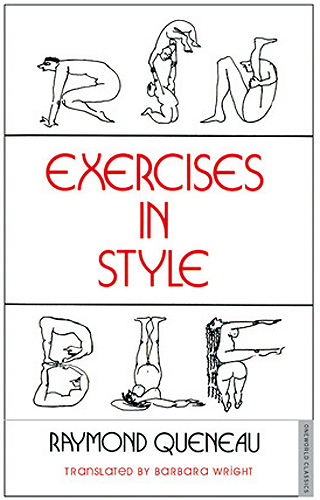


Potentialism, also known as procedural composition or constrained writing, is a literary practice in which the writer binds his or her process to some sort of predetermined set of rules or patterns. Examples of constraints could be allowing only certain letters at certain times, working with set syllabic forms, prohibiting certain words or letters and so on.
Author Walter Abish, used constrained writing technique in his experimental novel, Alphabetical Africa. In this text, Abish starts by confining the first chapter to only words starting with the letter “a.” The following chapter only words that start with “a” and “b,” he continues this until he reaches the 26th chapter where he can write freely and then recedes back to only word’s starting with “a” in the text’s 52nd chapter.
One group that utilized this technique was Oulipo. “Oulipo” is a shortening the French title Ouvroir de literature potentielle, or “workshop of potential literature.” The group was comprised of French writers Raymond Queneau, François Le Lionnais, Italo Calvino and others. These writers were interested in new outlets for creativity and linguistic discoveries through constraints. One prominent text from this movement in Raymond Queneau’s Exercises in Style, which recounts the same story of a man witnessing an account on a bus 99 times over. Each retelling delivers the account with a unique theme and style. Some other constraints Oulipo used include:
S+7:
Replace every noun in a text with the noun seven entries after it in a dictionary. For example, “Call me Ishmael. Some years ago…” (from Moby-Dick) becomes “Call me islander. Some yeggs ago…”. Results will vary depending upon the dictionary used. This technique can also be performed on other lexical classes, such as verbs.
Snowball:
A poem in which each line is a single word, and each successive word is one letter longer.
Lipogram:
Writing that excludes one or more letters. The previous sentence is a lipogram in B, F, H, J, K, Q, V, Y, and Z (it does not contain any of those letters).
Prisoner’s constraint:
A type of lipogram that omits letters with ascenders and descenders (b, d, f, g, h, j, k, l, p, q, t, and y).
(quoted from http://en.wikipedia.org/wiki/Oulipo)
An Exercise in Style:
Have everyone in the class read Ouilpo author Raymond Queneau’s Exercises in Style described above. In this initial remix exercise, students are asked to write the 100th exercise in style. As in Queneau’s book, the remix should have a title that identifies the “filter” the remixer intends to use when retelling this simple and banal story. This is an especially good exercise to assign the first day of class as it is easy to understand and execute. Having the students read their various remixes during the second class meeting is also strongly suggested as it enables all of the participants to immediately begin developing a connection between reading, writing, remixing and performing.
Alternative Second Exercise:
Bring in enough books and magazines so that there will be one book for every two students. Pair them up and and give each of them a book randomly. Have them write twelve (or more) chance operations. Give them examples like “open the book to a random page, close your eyes and put your finger to the page. Write down all of the text your finger is touching” or “turn to page 4 and write down the first 5 nouns” etc. Have them perform these operations with the book you have given them and this will form their poem. This is not a true cut-up in the Tzara/Burroughs/Gysin sense but that’s what makes it fun, and it’s close enough. It’s also a nice way to do a cut-up if you don’t have 20 pairs of scissors and want to keep your books intact.
Questions for the discussion:
1) What can we learn about the concept of remix from the class exercise in style?
2) What did you learn about your fellow classmates when you heard them read their “exercise in style”? Discuss the writing style they chose, the voices they used to read their remix (was it “their own” voice – were they “acting”?), and the title of their piece and how successfully they used that title to create a unique filter for their version of the story.
3) How does setting up arbitrary constraints create a unique context for you to engage in a simple remix performance?
4) Is there an art to creating a set of parameters for you to realize your potential in? remixthebook author, Mark Amerika, wrote an entire novel titled 29 Inches that was made using words sampled from his daily email spam folder. What parameters might stimulate new creative work from you?